Neverwhens, Where History and Fantasy Collide: Of Orks and Orkney
 |
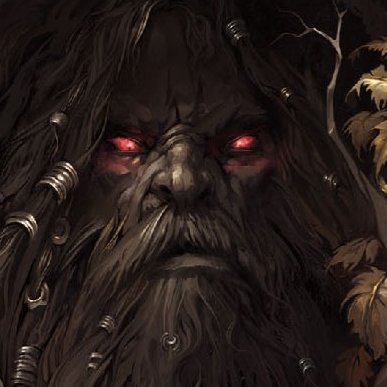 |
One of these men is an author, the other is Odin…there’s more commonality than you might think.
Scott Oden is an American writer best known for his historical novels set in Ancient Egypt and Ancient Greece, and historical fantasy. Oden’s breakthrough novel was 2005’s Men of Bronze, set in late Pharonic Egypt; it was followed in 2006 by Memnon and in 2010 with The Lion of Cairo, which mixed pulp-style action and sorcery with Crusader politics in Fatimid Egypt. His most recent novels are the opening volumes of the saga of Grimnir, the last orc, following a quest for revenge across the centuries, from Brian Boru’s Ireland in the 11th century to 14th century Messina in the forthcoming third and final volume. Considering how much his areas of interest and writing overlap with Christian Cameron, whom I interviewed last month, it was fascinating to see how much the two authors methods of world building do, and don’t, overlap.
GM: So you’ve written both historical fiction and fantasy. Which genre was your first love?
SO: Definitely fantasy. The Hobbit was my gateway text, back when I was 8 or 9 years old, and I quickly followed that with The Lord of the Rings, Robert E. Howard’s Conan (the Ace editions), and eventually Moorcock’s Elric and Karl Wagner’s Kane. I liked some historical fiction as a kid, mainly the fictionalized biographies of Harold Lamb — especially Alexander of Macedon… what kid wouldn’t marvel to the feats of Alexander, as described by Lamb? I was — and remain — a huge aficionado of Greek, Roman, Egyptian, and Norse myth. I had this little pocket-sized encyclopedia from Scholastic called Gods, Demigods, and Demons by Bernard Evslin. I still have that battered old copy . . . [GM: So do I!!!]
I did not fully get into historical fiction until my early twenties. My entré, back then, was another encyclopedia (I have a great love for encyclopedias of all stripes, thanks in no small part to my Mom, who made us read from the encyclopedia every night), Who Was Who in the Roman World by Diana Bowder. I hated history in school, but this book really opened my eyes to the possibility of the past. I saw story fodder in each entry, though it would take me a few years to capitalize on this revelation.
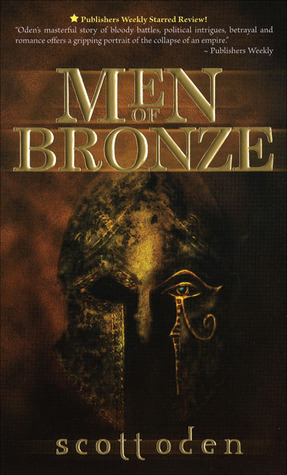 I discovered your work first through Men of Bronze, which remains a favorite of mine.
I discovered your work first through Men of Bronze, which remains a favorite of mine.
I will always love my first-born, but out of all my work I have the softest of spots for Memnon. That book proved to me that I didn’t always have to follow in REH’s footsteps — not that I didn’t want to, but I wanted to see if I could write something under a different set of influences. In Memnon’s case, the influence of Mary Renault and Steven Pressfield.
Much as I discussed with Christian Cameron last time, “world-building” is as much a part of historical fiction as it is fantasy – I doubt the average reader knows any more about late New Kingdom Egypt then they do the Third Age of Middle Earth (or why I actually just drew a parallel, for that matter!) Could you describe your process? I don’t mean “I read a lot,” but I mean, when you set out to write about Classical Greece, or 12th century Cairo or late Anglo-Saxon England, what are the sorts of things you are looking to weave into your fiction to make the literary world feel “real”?
I’m looking for color, texture, sound, and smell. I employ a technique called parallel research, by which I fill in the sensory blanks of the past with similar information from a related source.
For example, When writing Men of Bronze, I relied heavily on Gustave Flaubert’s journal of his trip to Egypt (Flaubert in Egypt: A Sensibility on Tour, 1979) for local color. It was more than a travel journal, though… it was Egypt through the eyes of a poet, and it told me everything from the color of the Nile on a sunny afternoon to the way the sun looks as it sets through a dust storm; the sounds and smells of Cairo’s streets found their way into my descriptions of ancient Memphis.
It’s these little details that sell the fiction. The history is relatively easy to master, but it’s the sensory input that brings the old stones to life. The highest praise I’ve received is from a Greek reader who, after reading Memnon, wondered if I’d visited the site of Mieza (where Aristotle tutored Alexander and his friends). I had not, but I found someone who had and peppered them with questions — especially regarding light and smells and sounds.
As far as my process, I start with a hyper-detailed synopsis that integrates a good bit of world-building along with notes on story and character. I like to begin with a timeline, populate it with story-specific information and layer in relevant bits of world history. This builds a base of common knowledge I can apply to various characters as their circumstances see fit. I also rely heavily on maps. In the case of my current work-in-progress, The Doom of Odin, the third Grimnir book, it would be a map of medieval Messina in Sicily, circa 1347 AD. This one is tricky, because the city was virtually leveled by earthquakes in the 19th and 20th centuries, so I look as far back in time as I can.
But, here is where a great bit of creative license is encouraged. For instance, the story needs a monastery in a certain place — on the curved bit of land that forms the harbor of Messina (a fortress from the 16th century sits there, today). I’ve found references to one in that area, but little else. So, I feel justified in creating a Benedictine monastery and populating it with a fictitious abbot, monks, and a Quasimodo-esque ward of the Church who looks after the local fishermen’s boats at night. Not strictly fantasy, but also not historical — a city viewed through a fantasists lens bearing smudges of history.
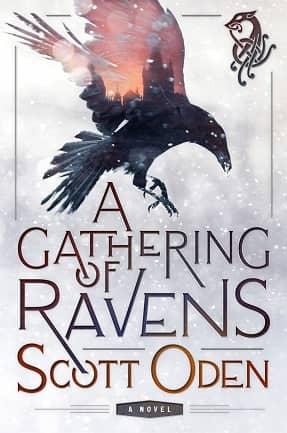 Your fantasy is what I think of as fantastical HisFic – the secondary world IS our world, only it is the hidden history of it. This is particularly true of the Grimnir novels, which are filled with Easter Eggs for the astute reader: Balor of the Evil Eye and his Fomor, Beowulf and Grendel…they are all there, as they “really were”. Can you tell me a little about how you weave the fantasy into the history and keep that sense that this is the “real” world – or at least a close parallel to our own?
Your fantasy is what I think of as fantastical HisFic – the secondary world IS our world, only it is the hidden history of it. This is particularly true of the Grimnir novels, which are filled with Easter Eggs for the astute reader: Balor of the Evil Eye and his Fomor, Beowulf and Grendel…they are all there, as they “really were”. Can you tell me a little about how you weave the fantasy into the history and keep that sense that this is the “real” world – or at least a close parallel to our own?
I think the key to keeping the sense of reality is to dial down the fantasy, a bit. To that end, I eschew grand and showy magicks in favor of smaller and more intimate displays — no “battle magic” and lots of quid pro quo with spirits of earth, air, fire, and water. And, the magic has to come with a price, usually blood. It also helps to sketch out the “rules” of magic, beforehand. Mine are pretty simple: the sorcery of the Elder World, Grimnir’s world, is fey, chaotic, and guided by oaths and offerings. The magic of the New World, the world of the Nailed God, is antiseptic, anaerobic, and centered on prayer and humility. One is wild, the other is safe.
The difficult part of creating Grimnir’s world was the act of porting Tolkien’s Orcs — a blatantly fictitious race — from Middle-earth to “our” Earth. But, as it turns out, Norse myth was well-suited to receive these new denizens. And, to maintain their “reality,” I started out by crafting pseudo-scholarly articles and texts, from an alternate version of Sallust’s Bellum Jugurthinum (called Bellum Orcadii) to a “recently” discovered translation of one of the foundational Norse Eddas, called The Lesser Gylfaginning, which lays out some of the creation myths of the Kaunar.
I created descriptions of “lost” visual artifacts like runestones and pot-sherds, wrote fictional excerpts from real books, forged archaeological records, and even tried inserting some of it onto Wikipedia (for what it’s worth, their community of editors are good at finding obscure forgeries). Pages and pages worth of fiction interpolated with fact and meant to be indistinguishable from reality, all to add the weight of history to the idea of “orcs in the real world.”
How does the process of creating Grimnir’s Europe differ from, say, creating *your* 5th century BC Egypt? Or does it?
There’s no appreciable difference, really. Both start with me learning what I can of the region, the people, the history, and the culture before I get to the stage where I’m tossing out what I don’t need or weaving in fictional events and characters.
From the point of creating audience “buy in” – what would say is most important in making readers believe and disappear into the world you are presenting? Is there something more (or less!) you’ve found fantasy requires that is different from straight historical fiction?
I’d say the details are what’s most important. Even though my historical fantasy and historical fiction are all, ultimately, works of imagination, the worlds they describe have to feel like the real world. What I mean is, my version of 6th century BC Egypt or 11th century Denmark is as “created” as Westeros or Hyrule or Thedas (from Dragon Age). It’s a fantasy world. But, it looks like something from our past. It uses a shared vocabulary, place names, and cultural cues. It’s the Egypt of picture books and film, the Denmark of legend, both given a veneer of respectability by the application of little scholarly bits, here and there. Straight fantasy or historical fiction, both require a great deal of effort on the author’s part to come across as real worlds.
OK, now let’s leave the “His” part of “HisFic” aside and go for the “Fic”. In my Goodreads review of A Gathering of Ravens I wrote that if we Imagined an authors’ meeting in the afterlife, where a youthful Robert E. Howard listened to J.R.R. Tolkien telling tales of the “Matter of the North” and then started writing, only to have John Gardner (author of the monster-point of view ‘Grendel’) say “I think it should be about Orcs,” you have a good feel for your book. I meant that as high praise – I feel like the book is a love song to Tolkien and Howard, the two pillars at the opposite ends of heroic fantasy, and there are some really good winks and nods to Howard fans. Is it fair to say that Grimnir’s story both lives in the “reality” behind Irish and North myth and in the universe – or again, a close parallel one – of Kull, Conan and Bran Mak Morn?
That’s some of the highest praise I’ve received, and I thank you for it. In my head-canon for Grimnir, his people would have raided — and been raided by — Bran Mak Morn’s Picts, which means the chaotic and fey branches of the Ash-Road — mighty Yggdrasil — could conceivably open a doorway to the Hyborian or Thurian Ages. It would take a great sorcerer of the dvergar, of course, but it’s entirely possible. I love that sort of lore, that weaving of mythologies to create a “truth” behind the stories. I’ve even extended it into my own work: Grimnir and Assad — the Assassin protagonist of The Lion of Cairo — exist in the same world, at nearly the same time. So I very nearly had Konraðr the White, the Crusader villain of Twilight of the Gods, bear among his possessions from Outremer the Hammer of the Infidel, Assad’s enchanted sword-knife. I resisted that urge…
Homage vs. pastiche vs. imitation is always a tricky balance – I think you nailed it here, but do you have any rules you set yourself for how much you’ll give a wink and a nod to your idols?
I don’t have any hard or fast rules for the homages I perpetrate, save that I try to hide a few in every manuscript. Some are less-than-subtle, such as Grimnir’s oft-uttered curse “dunghill rat!”, which is a nod to Tolkien’s orcs, or the straight-up mention in A Gathering of Ravens of “the fall of doom-haunted Atlantis and the rise of the sons of Aryas,” which hearkens back to Robert E. Howard’s “The Phoenix on the Sword.” Others are better hidden and act as Easter eggs for observant readers. Then, of course, there’s The Lion of Cairo. That whole novel is one giant homage to Robert E. Howard’s excellent Crusader-era tale “Gates of Empire.”
And, of course, you’ve gotten to write pastiche… of the big man, Conan himself. In some ways, I’d imagine working in someone else’s secondary world – especially one as famous as Howard’s, but also that so many other authors have mucked with (to varying extent) would be daunting. How was this different from working in your own worlds? Any surprises?
Getting to write Conan — 2019’s 12-part novella “The Shadow of Vengeance,” serialized in Marvel’s The Savage Sword of Conan — was both a bucket list item and a dream come true. I felt like an athlete who’d been training all his life for That One Game. I was ready to go all-in; my whole life I had been working to that end, and after I’d been offered the gig and accepted, I spent half the night burning offerings to the gods and swearing oaths: “By Crom, I would not muck this up!”
But, I wanted to go a step further than most pastiche writers: I wanted to get as close to the great man’s style as humanly possible. Once I’d selected my place in the established canon — a follow-up to “The Devil in Iron” — I pored over the Del Rey editions of the stories with a hi-lighter and page flags. I treated it no different from historical research. REH had a cadence to his prose, formed not only by the needs of his story but by his vocabulary, by his image of Conan, and by his own mood. He saw Conan as historical fiction with a touch of the Weird, so that was where I started from.
A Gathering of Ravens had taught me the requisite grimness — the doom and thunder of the Northern Thing — and my own life-long love of the character had made me more than familiar with his voice. But, just to cover my bases I created a document filled with just Conan’s dialogue, and referred to it any time I lost track of his voice in my head. The rest, the pacing and the exposition, came from multiple readings of his stories, and from my own historical writing.
It turned out well enough that they let me do another one: “Conan Unconquered,” which was bundled with the video game of the same name and had as a frame story Conan telling a tale to his men on the night before the Battle of Shamla Pass from “Black Colossus.” As an extra bump, Fredrik Malmberg at Cabinet Entertainment (who holds the rights to REH’s IP) granted me permission to use what’s called “the Yaralet Fragment” — an unfinished opening to a Conan tale. So, it’s a composite of REH’s words and my own. That was awesome.
Grimnir’s not the most handsome fella in sword & sorcery history, but he is one of the more interesting!
Back to Grimnir (I’m trying to keep you on your toes)… So why orcs in medieval Europe, rather than some secondary world?
You know, when I first pitched the story to my editor at St. Martin’s, it was a secondary world fantasy. It was set in a Mediterranean analogue, with Orcs as janissary-like slave-soldiers to a monotheistic empire cribbed from the Ottomans that was slowly taking over the world. The hero was an Orc called Kothric, captain of an elite company, who became this Spartacus sort of figure to his brother-Orcs. It was bog-standard heroic fantasy, with nothing really to make it stand out from the field. And I didn’t think the market wanted another secondary world Orc book, so…
I nearly scrapped the whole thing. But, a friend of mine, upon seeing me twisting and writhing in indecision, threw down an email gauntlet. He dared me to run with an idea I briefly played with wherein I brought Orcs into our world, as creatures of history and myth. He bet me I couldn’t do it. He bet me they’d be too cartoonish to make it past my editor’s rather discerning eye. With no other options on the table, save chucking the idea into the nearest bin, I picked up his gauntlet and ran with it. My first step was to lift the origin story of the Orcs from The Silmarillion and place it squarely in the belly of Norse myth to gauge its fit. And it fit well. Thus, Grimnir and A Gathering of Ravens were born.
Considering the Howard nod, and an equal love of Tolkien… does this mean we’ll see a hobbit pop up anywhere?
I considered a midget berserkir named Bingo for Twilight of the Gods, but good sense prevailed.
“Scientific magic” seems to be a vogue right now. I’ve noticed that the magic in your tales is wild and fey – there are no clear rules the reader can discern other than it’s otherworldly, unpredictable and never comes cheap. What do you see as the role of magic in fantasy lit?
Well, there can be no sword-and-sorcery without magic, can there? I dislike cut-and-dried magic “systems”, where everything is explained and it follows laws and strictures as though it were — as you say — science. Magic is the unknown, the unknowable; it is a dangerous force, a weapon that cares not for good or evil. By that same token, however, I also dislike flashy D&D-style magic — fireballs and invisibility and other powers that mimic the doings of comic book superheroes. To me, magic should be ritualistic, involving blood-pacts and conjurations and the exchange of oaths; it should be as inscrutable as the true face of Odin, and as ever-present. And it should be dangerous even for experienced mages.
As for its role in fiction, I think that’s ultimately up to the individual writer. In A Gathering of Ravens, it is a weapon of last resort. Grimnir is no mage, but he knows the formulas and the chants, the words of power and the hierarchies of the spirits. He’s both cunning and daring enough to play upon the emotions of otherworldly creatures in order to achieve his ends.
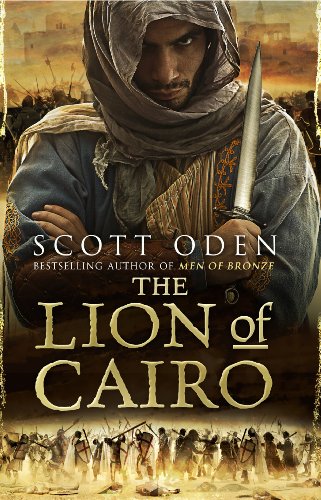 I can’t let this interview pass without talking about your other fantasy novel, the fantastic Lion of Cairo. Of all your books, this one seems to get the least attention, and I don’t understand why – I thought this was a classic swashbuckler, meets sword and sorcery, with a lot of modern writing style. I read it on a plane flight and I think the person in the seat next to me was annoyed the entire way because I was flipping pages frantically while he was trying to sleep. This was actually an early book, yes? Can you tell us about it?
I can’t let this interview pass without talking about your other fantasy novel, the fantastic Lion of Cairo. Of all your books, this one seems to get the least attention, and I don’t understand why – I thought this was a classic swashbuckler, meets sword and sorcery, with a lot of modern writing style. I read it on a plane flight and I think the person in the seat next to me was annoyed the entire way because I was flipping pages frantically while he was trying to sleep. This was actually an early book, yes? Can you tell us about it?
Glad you liked it! I always hoped to meet the one soul who’d read it (I jest, but not by much). I honestly don’t know why the book didn’t do better, but it was dead on arrival at St. Martin’s — where it was marketed as historical fiction rather than historical fantasy — and the series it was to begin was stillborn. The Lion of Cairo was my third novel, written in 2008-2009 and released in 2010 to absolutely no fanfare at all. I put my career on hiatus after I turned it over to my editor in order to pursue a higher calling — that of being a caregiver to my terminally ill parents. The book got mixed reviews, was overlooked by the trade publications, and generally languished on life support until it was remaindered.
But what a book it was! An homage to REH’s “Gates of Empire,” true, but also a love-song to the old swashbucklers like The Thief of Baghdad. For those unfamiliar with it, it’s the story of a lone Assassin, the Emir of the Knife, who is sent into the heart of Fatimid Egypt to reestablish ties between the Caliph and the lord of Alamut, the Old Man of the Mountain. He is thwarted by a rival clan of Assassins, by rapacious Crusaders, and by the machinations of a lord of Syria, Shirkuh, and his cunning nephew . . . who would be remembered in history as Salah-ad-Din. There are cruel viziers, wily thieves, beautiful and daring women of the harem, eunuchs, courtesans, sorcerers, and an enchanted sword-knife with a mind of its own.
Despite all that, it flopped like a fish out of water. It wasn’t fantastical enough for the fantasy audience, nor historical enough for the historical fiction crowd. It was its own thing, and it exists, now, only in the occasional thrift store hardcover or as an e-book.
I challenge your readers to grab a copy and give it a read! [GM: For the love of God, go buy this book! It is a great read.]
Finally, I know Grimnir’s journey is drawing to an end…any ideas what’s next? Historical Fiction, Historical Fantasy or fantasy in a secondary world? (This is Greg officially lobbying for a return to late Pharonic Egypt, only with a sorcerous twist….)
After The Doom of Odin (Grimnir 3), I’m headed to the Hyborian Age for a novel featuring our favorite thief, Shevatas. After that, I have a new ancient Greek historical fantasy planned, a tale about the playwright Euripides and the “real-life” inspiration for his play, Medea. Its working title is The Witch of Colchis. I’m also toying with a biographical novel on the life of the real d’Artagnan, Charles de Batz de Castelmore, Comte d’Artagnan, and possibly something Egyptian and fantasy. There’s all kinds of things rattling around in my head . . .
Greg is a native Chicagoan with a background in journalism and history. While in university, he began researching the martial arts of Late Medieval and Renaissance Europe. After working in marketing and corporate communications for a decade, he lost his mind and opened a small, non-fiction press (www.freelanceacademypress.com) dedicated to medieval studies, and opened Chicago’s only full-time European martial arts school to house the Chicago Swordplay Guild, which he had founded in 1999 (www.chicagoswordplayguild.com). As a fiction writer, in recent years he has published a growing number of short stories, and has the obligatory unpublished novel manuscript sitting on his hard drive.
Greg lives with his very tolerant family in the Chicago suburbs. His most recent article for us was an Interview with Christian Cameron.
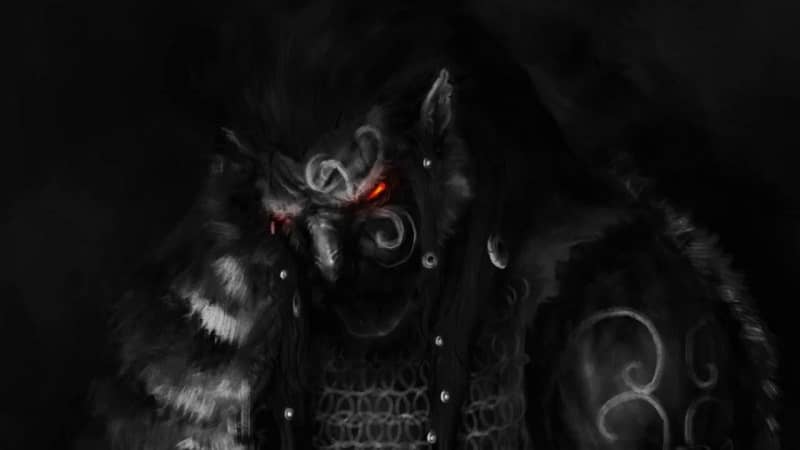
Epic interview! I particularly love the research and use of color & details. It really does make the world “real” and immersive.
I shared in the Goodreads Sword & Sorcery group which recently had a group read of Oden’s work.
https://www.goodreads.com/topic/show/21185693-a-mar-apr-2020-scott-oden